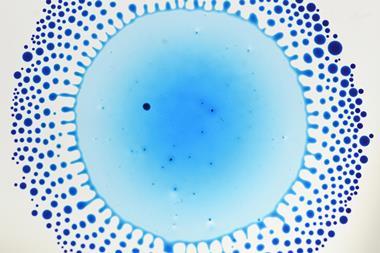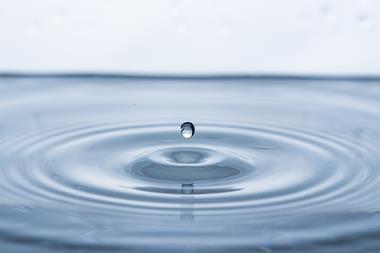Tiny oil droplets can be made to form complex shapes as they dissolve on chemically engineered surfaces, which use hydrophobic circles to direct the droplets into flowers, dumbbells or even the shape of a sad emoticon.
A team led by Xuehua Zhang at the Royal Melbourne Institute of Technology, Australia, showed that intricate 3D motifs can be produced on a hydrophilic solid surface that was patterned with tiny hydrophobic circles, using a technique known as ‘pinning’. The team used atomic-force microscopy to observe the shapes made by femtolitre (one billionth of a billionth of a millilitre) droplets of oil.

The arrangement of the hydrophobic circles underneath each droplet leads to particular shapes being produced as the droplet spreads out, due to the higher affinity between the oil and the hydrophobic areas. For example, if a droplet spans across two circles, a stretched dumbbell shape will be formed, before the bridge between the two ends eventually disappears leaving two smaller drops. In the case of a droplet formed over four circles, a square is formed, and the liquid joining the corners eventually dissipates leading to four separated smaller droplets.
The team says the ability to predict and control the shape of liquid drops can have applications in high-throughput screening technologies, lubricants and lab-on-chip devices.
References
S Peng et al, J. Phys. Chem. Lett., 2017, DOI: 10.1021/acs.jpclett.6b02861

























No comments yet